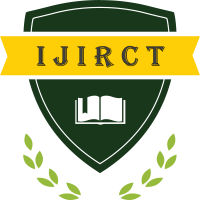MODELLING AND CONTROL OF BOOSTED VOLTAGE CONVERTER FOR RENEWABLE ENERGY SYSTEM
Author(s): G.KAVITHA, N.SRAVANI, Y.VISHNU VARDHAN, V.PEDDI RAJU, V.MOUNIKA
Publication #: 2504038
Date of Publication: 10.04.2025
Country: India
Pages: 1-11
Published In: Volume 11 Issue 2 April-2025
Abstract
Developing a high gain dc-dc converter was the goal of the project "Modelling and management of boosted voltage converter for renewable energy system." The high gain approach has been successfully used to dc/dc converter designs. But as time goes on, the output voltage will rise. The output voltage increases in a patterned advance using a high gain approach that is presented in this research. In Stevens' law, it successfully increases the voltage transfer gain. These days, the utilization of renewable energy sources is growing steadily due to its affordability and cleanliness. However, intermittent DC voltages of less than fifty are provided by renewable energy sources such as fuel cells, electrical phenomena panels, etc. Therefore, the output voltage should be improved to a higher voltage level (usually 300V to 400V) in order to connect these sources to an associated AC load or network. Due to the high voltage stress on the switch and severe duty cycle problems during operation, a typical boost converter is unable to provide such a high conversion magnitude relation. High intensity DC/DC converters are therefore required. These converters are used in a variety of applications, such as power supplies in the telecommunications industry, battery backup systems for uninterrupted power supplies (UPS), and high-intensity discharge lamps (HID) for car headlights.
Keywords: high-intensity discharge; Software packages; resonant converters; DC-DC power converters; Mathematical models.
Download/View Count: 115
Share this Article
